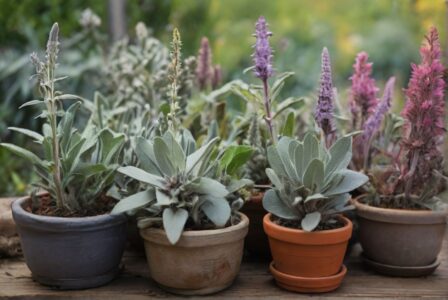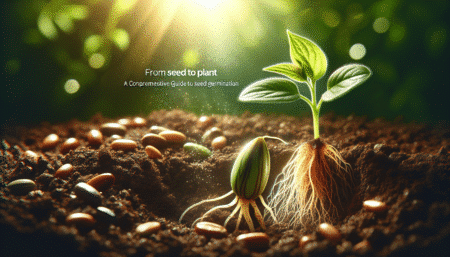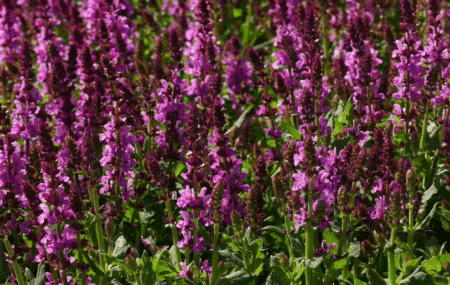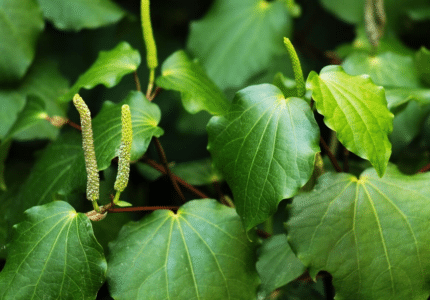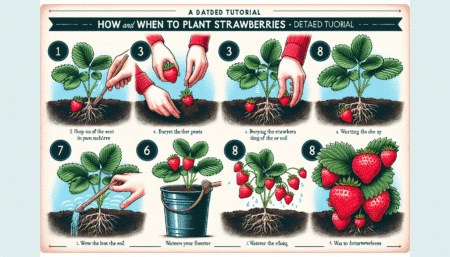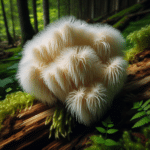- Introduction
- History and traditional applications
- Different types of Echinacea
- Scientifically proven benefits
- Possible side effects and interactions
- Echinacea in modern phytopharmacy
- Summary and outlook
Here you can find our different Echinacea seeds!
1. introduction
Echinacea purpurea, also known as the purple coneflower, belongs to the Asteraceae family and is a plant native to the eastern parts of the USA [1][2][5]. This perennial medicinal plant is not only valued for its striking purple flowers, but also has important immune-stimulating and anti-inflammatory properties [4]. Traditionally, Echinacea purpurea has been used to treat various ailments such as toothache, abdominal pain, snake bites, skin diseases and even cancer [4]. Today, science is focusing primarily on the positive effect of echinacea on the immune system [2].
In this article, we discuss not only the history and traditional uses of Echinacea purpurea, but also its scientifically proven benefits and possible side effects. We also take a look at the role of echinacea in modern phytopharmacy and provide a summary and outlook [2][4]. This comprehensive review offers a detailed insight into the world of Echinacea purpurea and its importance as a medicinal plant.
2. history and traditional applications
The traditional use and history of Echinacea purpurea and related species is diverse and rich in cultural significance, especially among Native North Americans. Their use ranges from the treatment of everyday ailments to specific medicinal applications:
- Healing properties and traditional applications:
- Discovered by indigenous American tribes who Echinacea for various health problems, including wound healing, insect bites and even snake bites [2].
- The plant extracts have also been used to relieve toothache and symptoms of colds [2].
- Echinacea-species were used in traditional aboriginal medicine for various purposes, including the treatment of toothache, poisoning, pain, burns, colds and rheumatic complaints [6].
- Knowledge transfer and global dissemination:
- The knowledge about the healing properties of Echinacea was passed on to European settlers, which led to its worldwide distribution as a medicinal plant [2].
- Echinacea has experienced a significant revival as a medicine in Europe in the early 21st century [7].
- The history of herbal medicine goes back thousands of years, with some Chinese medical texts dating back 5000 years [7].
- Popular use and recognition:
- Known as the red coneflower or red coneflower, it has Echinacea a long history of use in North America by the indigenous population for the treatment of wounds [8].
- It gained popularity in Europe in the early 20th century and is now a highly valued medicinal plant in the field of phytotherapy [8].
- Echinacea was used by Native American tribes for medicinal purposes, including the treatment of wounds, burns and insect bites, as well as for pain relief, treatment of infections and as an antidote to snakebites and other poisons [5].
This historical and traditional use underlines the importance of Echinacea not only as a medicinal plant in various cultures, but also its continuing relevance in modern phytopharmacy.
3. various Echinacea species
Echinacea purpurea belongs to a different clade than all other Echinacea species and is characterized by larger flower heads and leaves with serrated edges compared to E. angustifolia [1]. The three most important Echinacea species for medicinal use are Echinacea purpurea, Echinacea pallida and Echinacea angustifolia [6]. Echinacea purpurea is available in various forms such as tinctures, capsules and teas [9].
- Similarities and differences between the Echinacea species:
- All three main species require plenty of sunlight and thrive in dry conditions [3].
- Echinacea purpurea and Echinacea pallida are suitable for the Treatment of coldsupper respiratory tract infections, urinary tract infections and poorly healing wounds in Germany, while the root of the Echinacea pallida plant is also approved for the treatment of flu-like infections [12].
- Echinacea species are available in different colors, including various shades of orange, yellow, white and purple [3].
Echinacea purpurea, also known as the red coneflower, is a robust, perennial plant that grows upright, bushy and clump-forming, reaching a height of 80-100 cm and a flower size of 50-60 cm [11]. Echinacea laevigata (smooth coneflower) and Echinacea simulata (pale coneflower) are non-native, endangered or clump-forming plant species that have upright-growing flower stalks with a height of 30-60 cm and 60-80 cm and a flower size of 30-40 cm and 30-50 cm respectively [11]. Echinacea pallida (Prairie hedgehog's head) is a non-native plant that grows in a cone shape, with drooping petals and reaches a height of 70-80 cm and a flower size of 40-50 cm [11].
Echinacea plants are important for native wild bees, with Tennessee coneflower being a popular choice [11]. These plants require a sunny location and are suitable for pots, balconies and terraces [11]. In addition, echinacea plants are attractive to bees, butterflies and insects, which makes the Biodiversity in gardens increased [10].
4. scientifically proven benefits
Echinacea purpurea, known for its impressive health benefits, has gained widespread scientific recognition. Research has uncovered a variety of uses and effects of this plant:
- Immune system and cold prevention:
- Reduces the risk of catching a cold by almost 60% [13].
- Can shorten the healing process for people who are already ill by around one and a half days [13].
- Normal use for prevention reduces the risk of infection by 65% [13].
- Echinacea-based tablets are effective in preventing and relieving cold symptoms [15].
- Extracts of Echinacea purpurea can reduce antibiotic use in children with respiratory infections by 73% [15].
- Antioxidant and anti-inflammatory properties:
- Echinacea purpurea is rich in antioxidants such as flavonoids, cichoric acid and rosmarinic acid, which can protect the body from oxidative stress [16].
- Has anti-inflammatory properties that can benefit joint health [16].
- Contains bioactive compounds such as alkylamides that contribute to its immunomodulatory effects [6].
- Polysaccharides play an important role in the anti-inflammatory effect of echinacea preparations [4].
- Anticancer and antidiabetic effects:
- Echinacea purpurea extracts have been shown to suppress the growth of cancer cells and even induce cancer cell death [16].
- The extract has an inhibitory effect on enzymes that digest carbohydrates, which could potentially lower blood sugar levels and reduce the risk of type 2 diabetes and heart disease [16].
- Contains alkamides, cichoric acid and polysaccharides, which have anti-inflammatory, antiviral and antibacterial properties [17].
These findings underline the many health benefits of Echinacea purpurea and its role in modern phytotherapy.
5 Possible side effects and interactions
Echinacea purpurea, also known as purple coneflower, is widely recognized for its health benefits, but as with any dietary supplement, there are possible Side effects and interactions that need to be taken into account:
- Possible side effects:
- Stomach complaints, allergic reactions and dizziness are known side effects of Echinacea purpurea [19].
- The more common side effects also include gastrointestinal disorders and skin rashes [20].
- Allergic reactions can occur particularly in people who are sensitive to other plants from the Asteraceae family [9].
- In rare cases, allergic reactions such as skin rashes, itching and, in very rare cases, facial swelling, breathing difficulties, dizziness and low blood pressure may occur [21].
- Interactions and precautions:
- Echinacea purpurea may interact with certain medications and medical conditions [19].
- It is not recommended for people with autoimmune diseases or who are taking immunosuppressive medication [19].
- Caution is advised when taking it together with certain medications such as anxiolytics, antidepressants and anticoagulants [19].
- Theoretically, it could interact with immunosuppressive drugs and drugs that are metabolized by the cytochrome P450 system [20].
- Recommendations for use:
- The dosage instructions should be followed carefully and use should be discontinued if side effects occur [19].
- People with autoimmune diseases or a weakened immune system should avoid Echinacea purpurea [9].
- Echinacea purpurea should not be taken in the case of allergies to Echinacea purpurea or any of the other components, progressive diseases, abnormal increase in white blood cells, connective tissue diseases, multiple sclerosis, AIDS and related infections, autoimmune diseases or by pregnant or breastfeeding women [21].
- It is important to consult a healthcare provider before starting a new supplement, especially for people with existing health conditions or who are taking other medications [9].
6 Echinacea in modern phytopharmacy
Echinacea purpurea has established itself as an important medicinal plant in modern phytopharmacy, and its benefits continue to be uncovered through ongoing research and development:
- Research and development:
- Lee Rodman conducted research on E. purpurea indicating that the species, although not native to the study area, was planted in at least one prairie restoration within the research area [1]. This underlines the adaptability and interest in the plant for ecological and medicinal purposes.
- Echinacea extracts are a key ingredient in RESTORIA IMMUN PLUS, a dietary supplement developed by Quisco Healthcare to strengthen the immune system [2]. This shows the practical application of echinacea in the development of modern health products.
- Dissemination in pharmacy:
- In Europe, around 35% of all medicines prescribed by doctors are of natural origin, and over 50% of over-the-counter medicines are derived from plants [7]. Echinacea purpurea, a native perennial plant in the United States that is easy to grow and produces large flowers over a long period of time, plays an important role here [22].
- Cultivation and care:
- Echinacea prefers hot daytime temperatures during the summer and tolerates humid air well [22]. It looks best in a compost-enriched soil, but tolerates nutrient-poor soils better than most garden plants [22].
- The plant requires at least 1-2″ of water per week during the growing season [22]. Spent echinacea flowers can be removed to improve the overall appearance of the plant [22]. Echinacea plants can be propagated by seed or division, although it should be noted that hybrid cultivars do not develop from seed [22].
The integration of Echinacea purpurea into modern phytopharmacy reflects the increasing recognition of the importance of herbal remedies and their health benefits. The continuous research and development of new products, such as RESTORIA IMMUN PLUS, as well as the spread of Echinacea-based medicines in Europe, demonstrate the potential of this plant in modern medicine and health care.
7. summary and outlook
As part of our comprehensive look at Echinacea purpurea, we have looked at both the traditional uses and the scientifically proven benefits of this remarkable plant. The historical importance of Echinacea in the traditional medicine of various cultures, particularly Native North Americans, as well as its continued relevance in modern Phytotherapy underline the versatile effectiveness and importance of purple coneflower. The evaluation of the different species of Echinacea illustrates not only the diversity of this genus, but also the specific properties and applications that make Echinacea purpurea so unique.
It has become clear that Echinacea purpurea is far more than just an attractive flower. Due to its immunostimulant and anti-inflammatory properties, it has established itself as a valuable element in modern healthcare. The findings on possible side effects and interactions encourage responsible use, but at the same time underline the potential of this plant in preventive and therapeutic contexts. Future research and further development of echinacea-based products should enrich our treasure trove of knowledge about this fascinating plant and further strengthen its role in healthcare.
Further questions and answers about echinacea
Which companion plants are recommended for Echinacea?
Plants such as the fragrant nettle or the splendid clefthoof are particularly suitable for accompanying echinacea. Various types of grass, especially those that grow between knee and waist height and sprout late in the year, such as mosquito grass, quaking grass, switch grass or 'Overdam' riding grass, are also excellent partners.
When should Echinacea be cut back?
Immediately after the flowering period in the fall is the ideal time to cut Echinacea back to about a hand's breadth above the ground. If the plant grows and flowers less after around three to five years, it is advisable to divide the root ball in spring to rejuvenate the plant.
What is the correct way to plant coneflower?
Echinacea perennials should be planted in fall or spring. Depending on the expected growth height, a planting distance of 30 to 70 cm should be maintained. When planting, the humus-rich potting substrate should be removed as far as possible, leaving the root ball intact. Excess substrate can be shaken off.
Which plants harmonize well with coneflower?
The following plants are particularly suitable for a successful combination with coneflower: blue nettle (Agastache), verbena (Verbena), various grasses such as moor grass (Molinia), mosquito grass (Bouteloua gracilis), switchgrass (Panicum virgatum), quaking grass (Briza media), autumn aster (Aster), Indian nettle (Monarda), delphinium (Delphinium) and various types of sage (Salvia).
Further links
- https://de.wikipedia.org/wiki/Sonnenh%C3%BCte_(Echinacea)
- https://www.just.ch/de/kraeuterlexikon/echinacea
- https://www.healthline.com/nutrition/echinacea
References
[1] – https://echinaceaproject.org/background/other-species-of-interest/echinacea-purpurea/
[2] – https://quisco-healthcare.com/echinacea-eine-heilpflanze-mit-langer-tradition/
[3] – https://www.praskac.at/baumschule/stauden/sonnenhut/
[4] – https://www.ncbi.nlm.nih.gov/pmc/articles/PMC4441164/
[5] – https://www.pascoe.de/wirkstoffe/detail/sonnenhut.html
[6] – https://de.wikipedia.org/wiki/Sonnenh%C3%BCte_(Echinacea)
[7] – https://archive-ouverte.unige.ch/unige:11695
[8] – https://dropa.ch/ratgeber/echinacea-kraftvolle-wirkung
[9] – https://www.apotheken-umschau.de/medikamente/heilpflanzen/sonnenhut-mit-echinacea-das-immunsystem-staerken-733437.html
[10] – https://www.yarinde.de/all-sonnenhut-pflanzen/
[11] – https://www.naturadb.de/pflanzen/gattung/sonnenhuete/
[12] – https://www.mountsinai.org/health-library/herb/echinacea
[13] – https://www.welt.de/wissenschaft/article973971/Mit-Echinacea-seltener-erkaeltet-schneller-gesund.html
[14] – https://www.avogel.ch/de/ihre-gesundheit/erkaeltung/echinacea-purpurea-herkunft-wirkung-wissenschaft.php
[15] – https://www.dinafem.org/de/blog/echinacea-immunsystems/
[16] – https://www.bonza.dog/de/inhaltsstoff/echinacea-gut-fur-die-gesundheit-von-hunden/
[17] – https://www.schoenenberger.com/magazin/heilpflanzen/sonnenhut-echinacea/
[18] – https://www.phytotherapie.at/assets/zeitschrift_phytotherapie.at/PT_3_22.pdf
[19] – https://www.onmeda.de/therapie/wirkstoffe/sonnenhut-id203946/
[20] – https://redaktion.onkopedia.com/onkopedia/de/onkopedia/archive/guidelines/echinacea-echinacea-spp/version-20072017T114922/@@pdf-latest?filename=echinacea-echinacea-spp-stand-juli-2015.pdf
[21] – https://www.pharmaciedesteinfort.com/de/amfile/file/download/file/384/product/3133/
[22] – https://www.plantdelights.com/blogs/articles/purple-coneflower-echinacea-purpurea-plant


